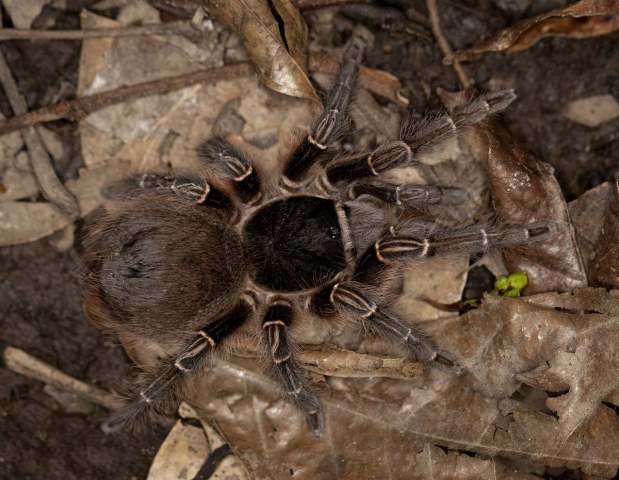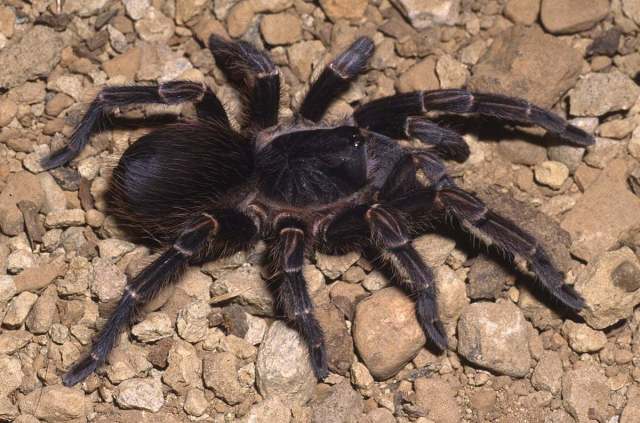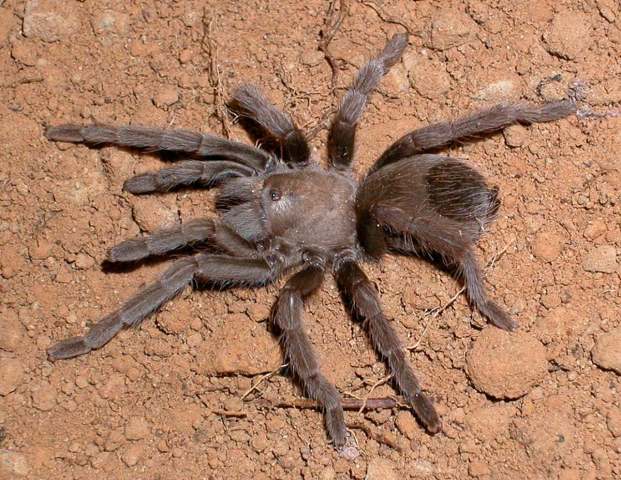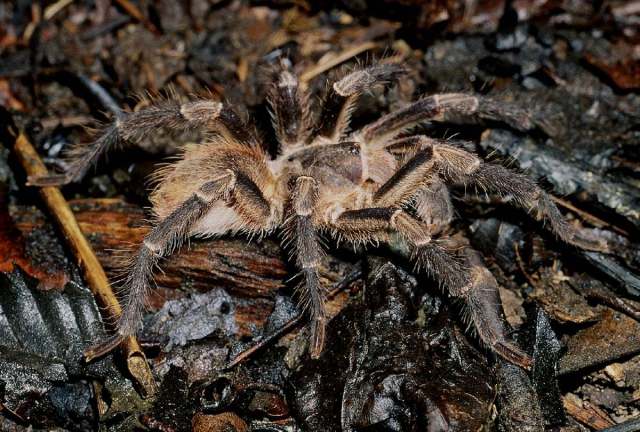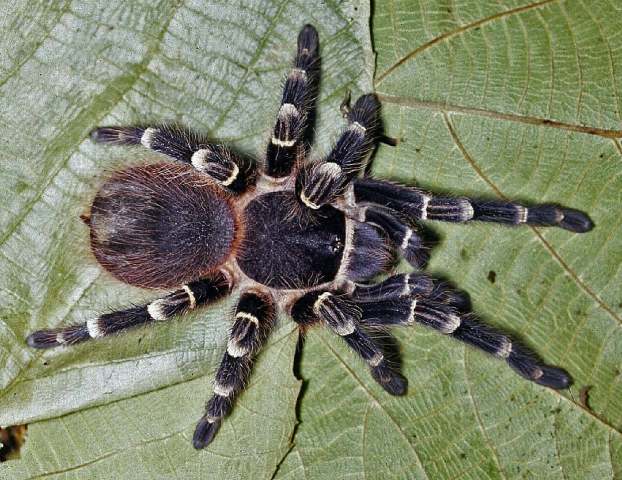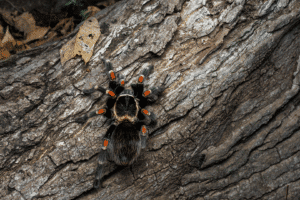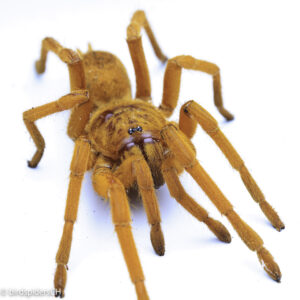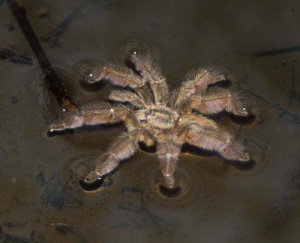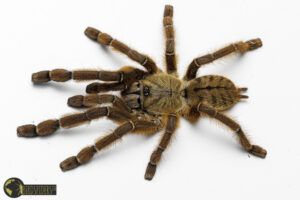Recent taxonomic changes and the lack of an article on this website about Megaphobema mesomelas besides our many encounters with the species have finally led to a summary from our team.
The genus Megaphobema is defined through the type specimen of Megaphobema robustum, native to Colombia. In short, the differences in morphological structures and DNA cleary show that the mountainous species of mesomelas and peterklaasi are so distinct to have their very own genus. The authors around Gabriel & Sherwood decided to call the new genus Abdomegaphobema. The generic name is a combination of the Latin verb abdo (meaning to remove) and the genus Megaphobema, about setting aside the below species from Megaphobema from South America.
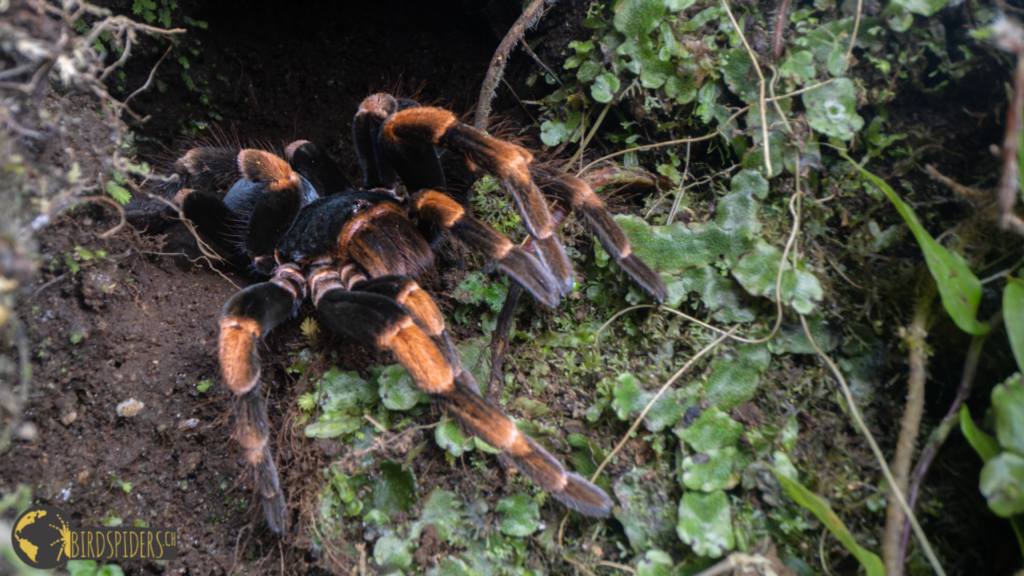
Natural history
The species mesomelas – the Costa Rican Red-legged Tarantula is native to the Cloud forest of Costa Rica. This is a unique habitat in many ways – relatively few hours of sun due to clouds and mist, low minimum temperatures during the night, and a lot of humidity, not necessarily from rain but from the dense vegetation. The graphic below shows you some differences between Santa Elena, Costa Rica. In this area many A. mesomelas can be found, and Quepos, an area in the Tropical Dry Forest zone which we all think of more as Jungle within Costa Rica itself.

mesomelas tend to live in burrows which are a little elevated from the ground. Unlike Theraphosa blondi which roam on the forest floor and use rodent burrows in the ground, A. mesomelas were always found on steeper areas. The burrows itself very relatively narrow in comparison to the body size of the adult tarantula – around 40cm in length maximum.
Due to the weather and climate up in the Cloud forest, it is possible to tickle the specimens out of their burrow even during the daytime, imitating a prey item with a grass halm. These stunning spiders present themselves gracefully and even stay outside when light rainfall sprinkles all over their body with little water droplets, as seen in one of our many videos.

In one of the areas we were able to find adult males and females of A. mesomelas and guided them together for a romantic date – we were lucky enough to film the mating behavior of Abdomegaphobema mesomelas in the wild. The freshly molted specimens with their velvet black and striking orange coloration are unique.
captive breeding
The breeding of this species in captivity of A. mesomelas is well documented. There are various articles by the author Struchen from 1994 and 2005 that highlight the success story of breeding A. mesomelas in Europe. It’s important to note, that the temperature and humidity requirement alongside the need for fresh air, accomplished through ventilation, is needed to breed mesomelas. The male can live together with the female for several months unmolested in the same cage. Even the sperm web can be built in the terrarium of the female. The time from the construction of the egg sac up to the hatching of the spiderlings is very long. It can last up to 134 days (Hitz 1994, unpublished). One can find the second stage of nymphs in the egg sac after 69 (Struchen) or 77 days (Hitz).
The requirements to keep this species successfully in captivity are not for the average heated living room. This species needs cool and humid nights with basking possibilities during the daytime to heat up. Because of these special requirements, breeding is rare and when it happens, the spiderlings are often bought by hobbyists without the proper dedication of the special care.
This is a tarantula species to better be watched in pictures and videos or even better, in their well-protected habitat in Costa Rica than in your enclosure back home.
more videos
If you rather enjoy watching videos, feel free to refer to the linked YouTube video down below and have a look at mesomelas in motion.
Thanks for reading and watching!

